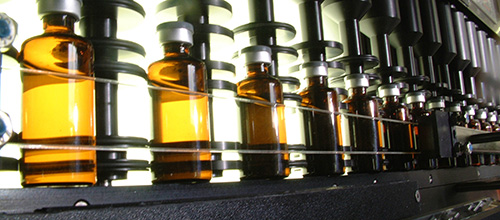Commentary Regarding new USP Chapters <787> and <1787> for Particulate Matter Guidance
Recommendation

Thursday, 12 February 2026 9 .00 - 17.00 h
During the current (2010-2015) USP Expert Committee cycle, the Dosage Forms Expert Committee has developed both new and revised general chapters that provide guidance on particulate matter content of injectable drug products. For visible particles, methods are based upon human detection sensitivity as described in Visible Particulates in Injections <790>, which applies to all sterile injectable dosage forms. For subvisible particle content, which is based upon instrumental determination, new particulate matter guidance has been established specifically for sterile injectable biotherapeutic products.
The new general chapter Subvisible Particulate Matter in Therapeutic Protein Injections <787> became official August 1, 2014, and provides an improved version of the approach in the chapter Particulate Matter in Injections <788> for the more-sensitive protein formulations. Chapter <787> was initiated to modify historical <788> testing by light obscuration, in order to address the sensitivities of protein products. Chapter <787> also provides a testing framework for a scientific and regulatory concern regarding the immunological effects of the sub-10-µm particle load. In addition, smaller-volume sampling is allowed, down to 0.2-mL aliquots, and sampling of individual containers as well as gentler de-gassing steps is included. Although particle-size thresholds remain the same at >= 10 µm and >=25 µm, with the same limits as those found in chapter <788>, there is a recommendation to monitor the population below the 10 µm threshold. Total particle content is limited to 6,000 particles >=10 µm and 600 particles >= 25 µm for all dosage forms.
The new informational chapter Measurement of Subvisible Particulate Matter in Therapeutic Protein Injections <1787> was developed to support chapter <787> and provides sizing, counting, and characterization guidance for all protein therapeutic products; <1787> provides significant expansion of recommended techniques. The new chapter will appear in USP 38 in November and become official May 1, 2015. As an informational chapter, it provides no count limits but instead is focused on the determination of the inherent protein population and its character.
The intent of chapter <1787> is to aid the scientific development process for all therapeutic protein products. The chapter provides guidance on subvisible particles in the 2-µm to 100-µm range. The rationale for using this range is based upon 100 µm as a conservative, lower-limit threshold for visible particles and 2 µm as the lower size domain for which the recommended techniques are considered robust and proven. The informational chapter is presented in three sections: Size and Distribution, Size and Morphology, and Characterization, with descriptions of techniques in each section. Advantages and disadvantages of each technique are presented. The chapter also provides definition and discussion of the three particle categories: a) extrinsic (truly foreign), b) intrinsic (unwanted yet arising from the process or product), and c) inherent (product attribute). A discussion of silicone oil content is included; even though silicone oil is a necessary additive for most products, it may produce artifact counts or unwanted particles, or it may affect the stability of the therapeutic agent if uncontrolled or used in excessive quantity.
It is recommended that data on the population below 10-µm is collected in two data bins: >= 2-5 µm and >= 5-10 µm. Chapter <1787> concerns all particle species present in the final product; however, it is primarily oriented toward the inherent therapeutic agent condition and acceptability. Certainly, the acceptability of the therapeutic protein product is dependent upon the innovator data and regulatory review.
D.S. Aldrich, USP Dosage Forms Expert Committee, <787/1787> Expert Panel Chair
D.G. Hunt, USP Dosage Forms Expert Committee Scientific Liaison




